
If you reside in the United States, you are aware that some coins are worth more because of their historical significance. For instance, consider the 1901 Indian Head Penny. Its 150-year history makes this rare and incredible coin a treasure of American numismatic history, having a design modification on the reverse side and metal composition.
Collecting the Indian Head Penny is a must for every avid collector. Since these coins are among the last few in the Indian Head series, their value has increased. The fact that they are over a century old makes it all the more challenging to locate one in pristine shape.
Would you like to learn more about the 1901 Indian Head Penny value and history? This blog post will provide you with more amazing information.
From 1859 to 1909, the United States Bureau of the Mint produced the Indian Head cent, also known as an Indian Head penny. It was designed by James Barton Longacre, the Chief Engraver at the Philadelphia Mint.
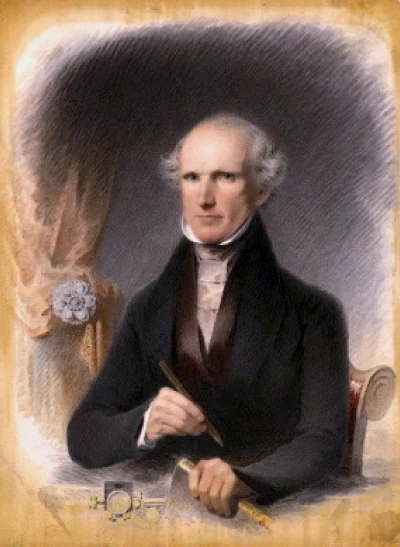
The Indian Head cent, minted in 1901, was one of the first coins struck at the newly built United States Mint facility, Philadelphia, constructed at 1700 Spring Garden Street. The new factory, with the advanced equipment, resulted in increased production.
The end of the Panic of 1893 had forced the Mint to reduce the mintages several years earlier. However, at the same time, the country's economy was going well, and the demand for cent coins was unprecedentedly increasing.
The extensive use of coin-operated machines, such as vending machines, was the main reason for the increasing need for coins. In 1901, however, a penny had the identical buying power of $0.35 instead of $1.
While this heightened preference for the one-cent coin has occurred, only the U.S. Mint in Philadelphia could engrave these coins. Such a move would have to wait for five years, until 1906, before any lifting was done. It took all these coins, especially the most circulating cent the US had ever produced, the 1901 Indian Head cent.
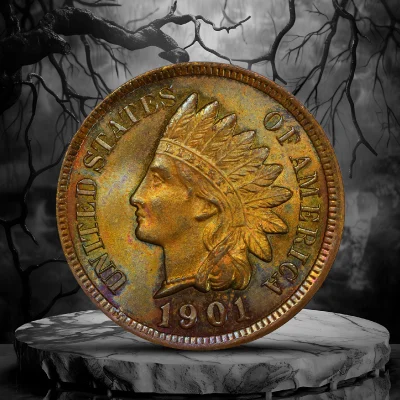
The Indian Head cent's obverse features a bust of Miss Liberty facing left and wearing a feathered headdress that symbolizes Native American culture. The headpiece is decorated with elaborate ribbons, one of which is a sizable ribbon with the word LIBERTY engraved at the base of the headdress beneath the feathers covering Liberty's forehead.
A smaller ribbon laced with a diamond pattern hangs down Miss Liberty's neck. In 1864, the initial "L" for Longacre was placed on a different ribbon segment deeper in Liberty's lower hair detail, acquiring greater numismatic significance.
At the bottommost center of the obverse, right below Liberty's neck, is the date 1901. The legend UNITED STATES OF AMERICA is inscribed in the field along the obverse rim.
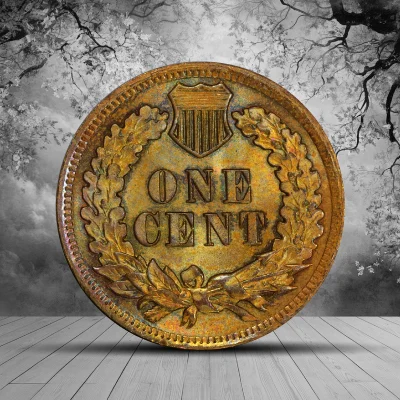
The 1901 Indian Head cent's reverse has a Union shield at the top center of the field, surrounded by an oak wreath. The word "ONE CENT," written in two lines in the middle of the reverse, is surrounded by a wreath. There is no mintmark on this coin because it was struck in Philadelphia.
The value of 1901 Indian head pennies is increasing rapidly for coins in better condition, and precise "grading" is essential in distinguishing a coin worth a few dollars from one worth a hundred dollars.
You can match your coin to the images and grading descriptions to determine its value.
In today’s market, the value of the 1901 Indian Head Penny is also influenced by the coin's mint state condition and color. Similar to other contemporary copper coins, the value of these coins differs significantly based on their color classification.
| Conditions | Images | Description | Value |
|---|---|---|---|
| Uncirculated |
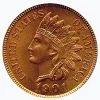
|
This penny is as good as new, even with its age. The coin's toning might seem dark red or brown, but the design has not been tampered with in any areas. | $20 |
| Extremely Fine |
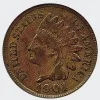
|
This grade has clear boundaries. The tiny bit of wear on the hair slightly above the ear requires close inspection. All in all, a beautiful coin with a good appearance. | $10 |
| Fine |
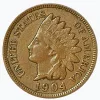
|
On 1901 Indian pennies in "fine" condition, the separation of the main design elements is evident. | $4.50 |
| Good |
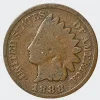
|
"Good" condition refers to a very worn coin that is still identifiable as a 1901 Indian penny. | $2 |
The 1901 Indian Head Penny’s timeless design by James Longacre depicts the Native American imagery of Lady Liberty rather than the original Native American figure. The coin comprises 95% Copper and 5% Zinc, tin, or sometimes both. The Indian Head Penny bears a diameter of 19 mm and weighs 3.11 grams. Since the coin-based machines demanded the production of coins, this cent had a mintage of approximately 79.6 million coins.
n today’s market, the 1901 Indian Head Penny value is also influenced by the coin's mint state condition and color. Similar to other contemporary copper coins, the value of these coins differs significantly based on their color classification.
| Mint State (MS) Grade | Color Designation | Average Value (USD) |
|---|---|---|
| MS67 | Red (RD) | $8,000 |
| MS67 | Red Brown (RB) | $1,400 |
| MS66 | Red (RD) | $1,400 |
| MS66 | Red Brown (RB) | $450 - $500 |
| MS66 | Brown (BN) | $400 |
| MS65 | Brown (BN) | $150 - $200 |
| MS65 | Red Brown (RB) | $200 - $240 |
| MS65 | Red (RD) | $500 - $600 |
| MS64 | Red (RD) | $200 - $300 |
| MS64 | Red Brown (RB) | $200 - $300 |
| MS64 | Brown (BN) | $100 - $150 |
| MS63 | Brown (BN) | $60 - $100 |
| MS63 | Red Brown (RB) | $80 - $100 |
| MS63 | Red (RD) | $100 - $150 |
| MS62 | Red (RD) | $50 |
| MS62 | Red Brown (RB) | $50 - $80 |
| MS62 | Brown (RN) | $35 - $60 |
| MS61 | Red Brown (RB) | $25 - $30 |
| MS61 | Red Brown (RB) | $25 - $30 |
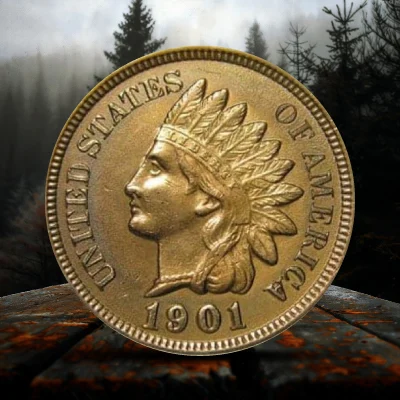
The Indian Head Penny was primarily minted in the US Mint facility in Philadelphia. The Coins struck here lack mint marks. Minted in larger numbers of 79.6 million coins, they are accessible and valuable. Depending on the condition, these coins have different values. For instance, as of August 2023, the MS66-graded BN coins are worth around $600.
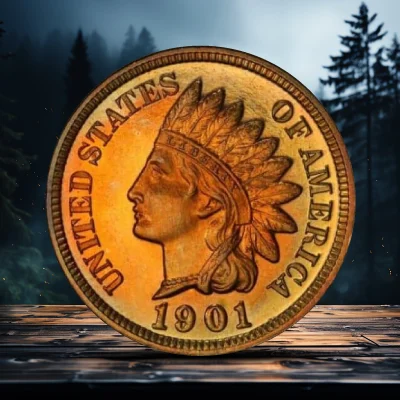
The Philadelphia Mint minted around 1,985 proof coins depicting mirror-like fields and frosted inscriptions. Rare and already highly sought after, the proof Indian Head Penny bears significant value. In August 2023, a PR 67+ graded CAM could have been valued at $50,000; however, a PR 66 CAM is valued at around $12,500.
Regardless of how well-maintained or advanced a machine is, errors in striking coins can be possible. Various errors can be made while striking, ranging from mismanagement in blanks to accidentally stamping on a metal fragment. This error might hamper the Mint, but they are valuable in the market! Here are some mistakes of the 1901 Indian Head Penny that are valuable!
A broad-struck coin has a flatter or thinner rim, which was messed up during the striking process. This error is precious; even lower-graded coins like VG 10 BN can be valued at $50.
When a coin is struck on a leftover metal blank from the previous strike that contains holes, the coin can have curved clips next to the holes. These coins appear worn out; after cleaning, they would be worth around $50.
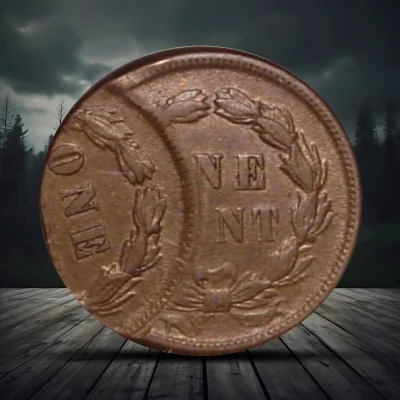
When the metal sheet or blank isn’t placed correctly on the striking machine, or when the coin starts to exit the press and get struck again, an overlapping or off-center strike error occurs. Such coins take up a notch in valuation, where an AU 53 BN, which had both the off-center and double strike, was valued at $745.
This is similar to the previous double-struck off-center coin, but now the coin was almost out of the machine and got struck again on the collar. The restruck collar is vivid due to the coin’s beaded rim. With an F-15 condition, the coin is valued at around $180.
In the machine's punching dates, if a coin shifts during the process, it can be restruck on the date, termed a Repunched date (RPD). This can be visible with overlapping numbers or the inner side of individual numbers. In 2016, one such coin, AU 50 RPD, was sold for $150, which may have more value in the current market.
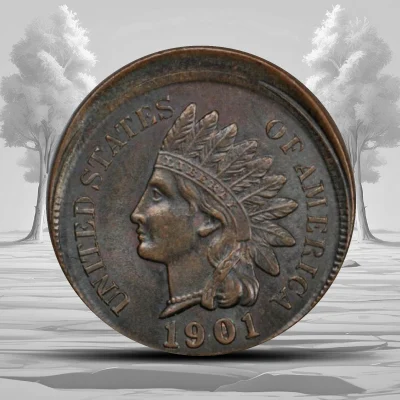
Double or triple strikes happen when a coin shifts during the striking process; however, when a coin shifts before the first strike, only a part of the coin depicts the design, while the rest is just blank. Depending on the condition, the value of such coins differs. The AU 55 was $180, and the MS64 BN was $515.
Delving into the Indian Head Penny of 1901 is a peek into much more than a coin; it is a doorway to the world of numismatics and the exciting story of America's past. This coin reflects the product of hard labor and innovation from the Philadelphia Mint revamps until the Ambassadors of collectors throughout the world possess this creation of ingenuity.
The Indian Head Penny of 1901 appeals to beginners and collectors of all skills since numismatics is a hobby for everyone. It isn't just about its monetary value but also about the histories and tales it carries.